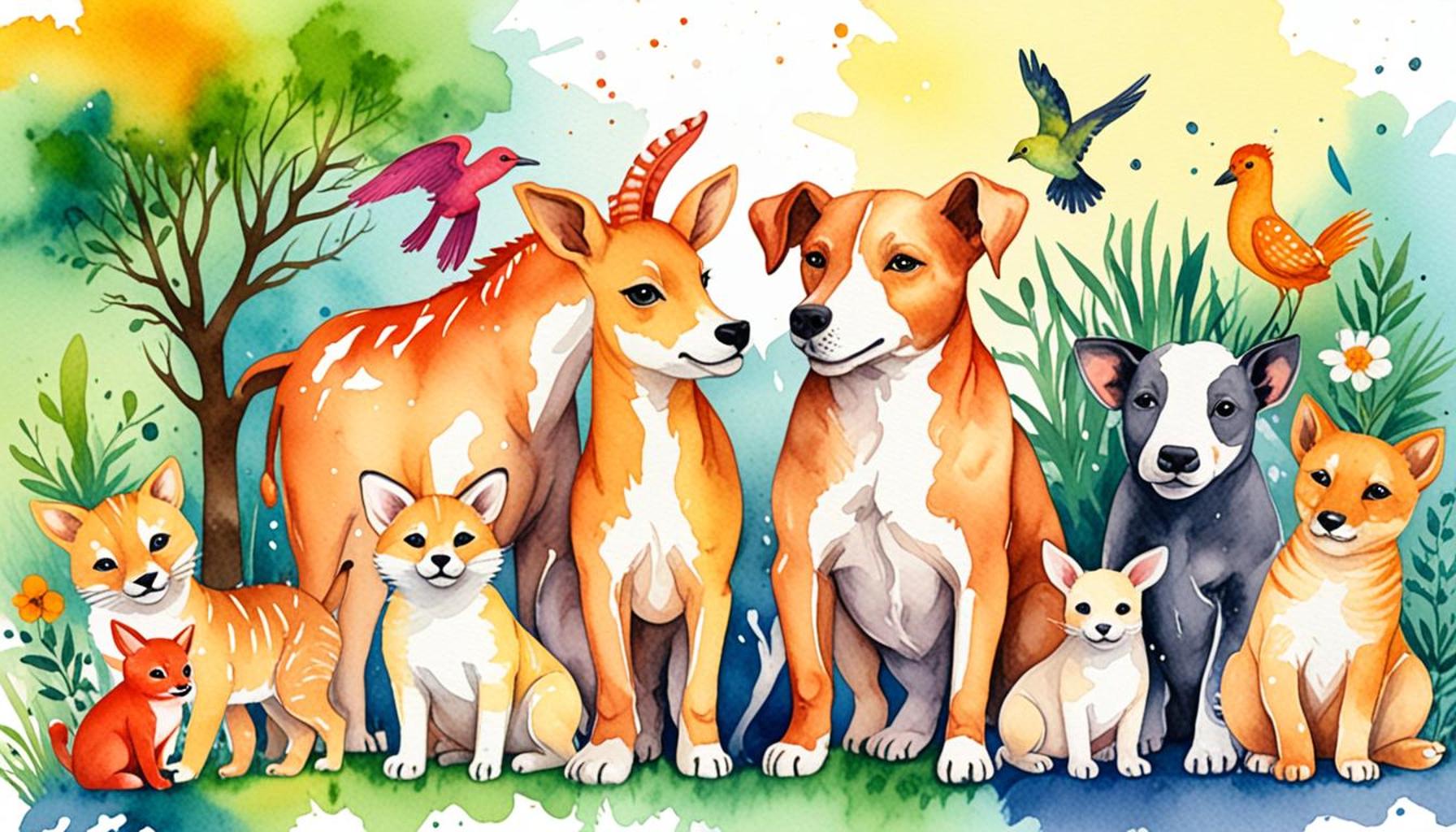Marketing Strategies for Animal Shelters: How to Attract More Adopters and Promote Responsible Adoption

The Importance of Effective Marketing in Animal Shelters
In the United States, animal shelters play a crucial role in finding loving homes for countless pets. However, despite the best intentions of shelter staff and volunteers, many shelters struggle to attract potential adopters. With the number of animals in need constantly rising, it becomes increasingly important for these shelters to implement effective marketing strategies that can help them connect with the community and promote the idea of responsible adoption.
Harnessing the Power of Social Media
One of the most impactful tools for animal shelters today is social media. Platforms like Facebook, Instagram, and Twitter allow shelters to reach a broad audience quickly and efficiently. By posting engaging content—such as photos and videos of adorable animals ready for adoption—shelters can capture the attention of potential adopters in a fun and relatable way. Social media campaigns can include themed days, where specific animals are highlighted or success stories of previously adopted pets are shared, creating a community buzz around the joy of pet ownership.
Fostering Community Engagement
Community engagement is another powerful strategy to attract attention to animal shelters. Hosting events like open-house days, adoption fairs, or “yappy hours” can foster a sense of community while allowing potential adopters to interact with shelter pets in a relaxed environment. Such events often draw in families and individuals who might not have considered adoption otherwise. This personal interaction may lead to lasting connections between pets and their future families, demonstrating why a visit to the shelter can be a life-changing experience.
Creating Meaningful Partnerships
Building partnerships with local businesses can amplify a shelter’s reach and visibility. Collaborations could involve pet-related stores, cafes that allow pets, or even corporate sponsorships. For instance, local coffee shops might donate a portion of their proceeds on an adoption awareness day, or pet supply stores could host “meet and greet” events featuring animals available for adoption. Such initiatives not only benefit the shelter but also create a deeper connection with the community, making adoption a more inclusive and supported choice.
The Power of Storytelling
In a world increasingly influenced by narrative, shelters can benefit from the art of storytelling. Sharing emotional success stories of adopted pets can resonate deeply with potential adopters. For example, highlighting how a once-abandoned dog found its forever home can evoke empathy and inspiration. These stories can be shared on social media platforms, printed materials, and during community events. By showcasing the transformative power of adoption, shelters remind the public of the profound impact they can have on an animal’s life.
By implementing effective marketing strategies like these, shelters not only attract more adopters but also raise awareness about the responsibilities involved in pet ownership. Understanding that adopting a pet is a long-term commitment can help mitigate the cycle of abandonment and ensure that the number of pets needing homes decreases. With the growing population of pets in need in the U.S., the significance of responsible adoption is more critical than ever.
As we dive deeper into these effective techniques, readers will uncover the ease and importance of taking part in the efforts to improve the lives of both animals and their future caretakers alike. Every animal deserves a loving home, and through comprehensive marketing strategies, shelters can make a meaningful difference.
LEARN MORE: Click here for financial tips on pet adoption
Leveraging Technology for Greater Reach
In an era where digital presence is indispensable, animal shelters are turning to technology to amplify their outreach efforts. A well-crafted website serves as the cornerstone of an animal shelter’s online strategy. This site not only needs to be visually appealing but also equipped with up-to-date information about available animals, the adoption process, and heartwarming success stories. By allowing potential adopters to browse animals from the convenience of their homes, shelters make the first step towards adoption seamless and engaging. Furthermore, integrating innovative features such as virtual tours and live-streaming pet meet-and-greets can significantly enhance user experience, fostering a more personal connection to the animals awaiting their forever homes.
Utilizing Email Marketing
Email marketing remains a powerhouse for shelters aiming to maintain contact with previous adopters, volunteers, and community supporters. By segmenting their email list according to interests or previous engagements, shelters can create targeted campaigns that keep recipients informed about upcoming events, newly available pets, and compelling success stories. Regular newsletters that share news, pet care tips, and profiles of animals looking for homes maintain engagement and create a sense of community. Additionally, encouraging past adopters to share their own stories via email not only strengthens existing bonds but can motivate others within their networks to consider adoption, illustrating the profound impact that a loving pet can have on one’s life.
Building a Strong Content Strategy
To build a supportive community around pet adoption, a strong content strategy is essential. Shelters can leverage various forms of content shared through blogs, articles, and social media posts. Topics that resonate with potential adopters include:
- The benefits of adopting rather than buying: Highlighting the unique advantages of rescue pets, such as lower costs and the joy of giving an animal a second chance.
- Understanding pet behavior: Educational content that prepares adopters to appreciate and address the needs of their new companions effectively.
- Financial responsibilities associated with pet ownership: Insight into the costs of food, veterinary care, and other necessities, helping potential adopters make informed decisions.
- Preparing your home for a new pet: Practical advice on pet-proofing and creating a welcoming environment for an adopted animal.
By sharing such educational materials, shelters can position themselves as trusted resources, fostering a culture of informed decision-making around pet adoption. This not only promotes responsible practices but also builds a foundation of trust within the community.
Engagement Through Visual Storytelling
Visual storytelling has emerged as a compelling tool for creating emotional connections with potential adopters. High-quality photos and engaging videos that capture the personalities and quirks of shelter animals can dramatically increase their relatability. For example, a “day in the life” series that follows a particular pet can evoke empathy and interest, prompting viewers to consider offering that animal a loving home. Intriguingly, infusing positive narratives into promotional content that highlight the transformation of pets from rescue to adoption can deepen emotional responses, making the idea of adopting a pet even more appealing.
In summary, by embracing technology, employing targeted email marketing, establishing a robust content strategy, and utilizing visual storytelling, animal shelters can dramatically expand their reach and inspire a larger audience of potential adopters. These strategies collectively encourage responsible adoption, ensuring that more animals find loving homes where they can flourish. This not only benefits the pets involved but enriches the lives of their new families, forming meaningful bonds that can last a lifetime.
| Strategy | Benefits |
|---|---|
| Engaging Social Media Campaigns | Increases visibility and community interaction, driving more potential adopters to your shelter. |
| Host Adoption Events | Creates a fun atmosphere, allowing prospective owners to meet animals in person, which can lead to higher adoption rates. |
| Educational Workshops | Promotes responsible pet ownership, addressing common concerns and encouraging informed adoption choices. |
| Utilize Local Partnerships | Expands reach through collaboration with businesses and community organizations, enhancing credibility. |
Implementing these strategies can notably transform how your shelter engages with the community. Using engaging social media campaigns allows you to connect with a wider audience, while hosting adoption events fosters personal connections between pets and potential adopters. Educational workshops can further empower individuals with knowledge, ensuring that they are equipped to provide a loving home. Lastly, forming partnerships with local businesses can enhance your resource pool and amplify outreach, making your shelter a trusted hub for responsible adoption practices. The synergy of these strategies is key to creating a sustainable adoption program that benefits both animals and the community at large.
DISCOVER MORE: Click here for financial tips on pet adoption
Community Engagement and Partnerships
Building a supportive ecosystem around an animal shelter can greatly enhance its marketing strategy. Community engagement plays a pivotal role in raising awareness and fostering a sense of collective responsibility towards animal welfare. One effective way to achieve this is through partnerships with local businesses and organizations. These alliances not only amplify visibility but also create mutually beneficial opportunities. For instance, a local pet supply store can partner with a shelter for adoption events, offering discounts to new adopters while promoting the shelter’s mission. Similarly, veterinary clinics can provide informational workshops on pet care in collaboration with shelters, further educating the community on the importance of responsible pet ownership.
Host Events and Workshops
Organizing community events is another impactful method for increasing adoption rates and promoting responsible ownership. Events such as adoption fairs, pet wellness clinics, and training workshops draw attention to available animals and provide a platform for direct interactions. Not only do these functions create a festive atmosphere that attracts foot traffic, but they also encourage attendees to engage with the animals on-site. Additionally, hosting educational workshops on topics like pet care, responsible ownership, and the benefits of adopting can demystify the adoption process and prepare potential adopters for the commitment they are about to make.
Engaging Social Media Campaigns
Social media platforms have become essential tools for shelters to reach a broader audience. By creating engaging campaigns that highlight specific pets, share success stories, and raise awareness about adoption, shelters can foster a vibrant online community. Utilizing hashtags such as #AdoptDontShop or #RescuePet of the Week can enhance visibility and encourage user-generated content, where current pet owners share their experiences. Contests or challenges—such as “Cutest Foster Pet” or “Best Pet Trick”—can further stimulate community interactions, turning followers into advocates for the shelter’s mission.
Incentivizing Adoption Through Promotions
Offering incentives can be a potent strategy for increasing adoption rates. Shelters can run special promotional campaigns that feature adoption fee waivers on specific days or for select animals, which lowers the barrier for potential adopters. Promotions such as “Adopt One, Get One Half Off” or offering starter kits—consisting of essentials like food, a leash, and toys—can entice more families to consider adoption. Additionally, highlighting any partnerships with local businesses that offer discounts on pet supplies post-adoption serves as an added incentive for people who might be on the fence about bringing a pet into their home.
Fostering a Culture of Feedback and Involvement
Encouraging feedback from adopters and community members can help shelters refine their approaches and foster a more participative culture. Online surveys or feedback forms can be distributed following adoption events to gauge satisfaction. This feedback not only provides valuable insights into the effectiveness of the shelter’s strategies but also creates a sense of ownership among participants. Furthermore, sharing positive testimonials and success stories on various platforms can inspire others to adopt while reinforcing a culture of community involvement and responsibility.
By prioritizing community engagement through partnerships, hosting events, engaging social media campaigns, incentivizing adoptions, and fostering feedback, animal shelters can craft a dynamic marketing strategy. This approach leaves a lasting imprint on potential adopters, paving the way for more animals to transition into loving homes while promoting responsible adoption practices throughout the community.
DISCOVER MORE: Click here for strategies to soothe your feline
Conclusion
In conclusion, effective marketing strategies for animal shelters are essential in reaching a wider audience and increasing adoption rates. By focusing on community collaboration, shelters can elevate their visibility and foster a sense of belonging within the neighborhood. Partnerships with local businesses not only broaden their reach but also create an ecosystem in which the community actively supports animal welfare.
The importance of interactive events and workshops cannot be understated. These initiatives offer potential adopters the chance to connect with animals in a lively environment while learning about responsible pet ownership. By incorporating engaging social media campaigns, shelters can cultivate an online presence that captivates hearts and encourages sharing, effectively turning followers into advocates.
Moreover, providing incentives for adoption and establishing a culture of feedback can de-stigmatize the adoption process, making it more attainable and appealing. Every interaction with the community not only enhances the shelter’s mission but also drives home the importance of responsible pet ownership.
As shelters implement these marketing tactics, they must remain adaptable, continuously evaluating and refining their approaches based on community feedback and trends. Ultimately, a comprehensive marketing strategy is not just about increasing numbers; it’s about building lasting relationships that ensure a safe and loving home for every animal. The path to greater adoption rates and responsible pet ownership is paved with collective effort and creativity, making every step significant in shaping a brighter future for animals in need.


